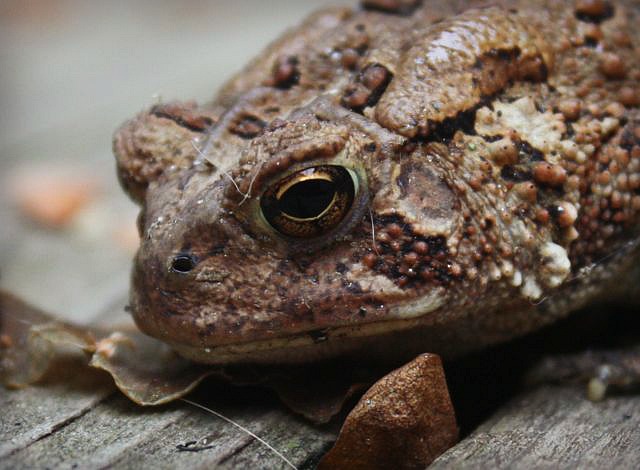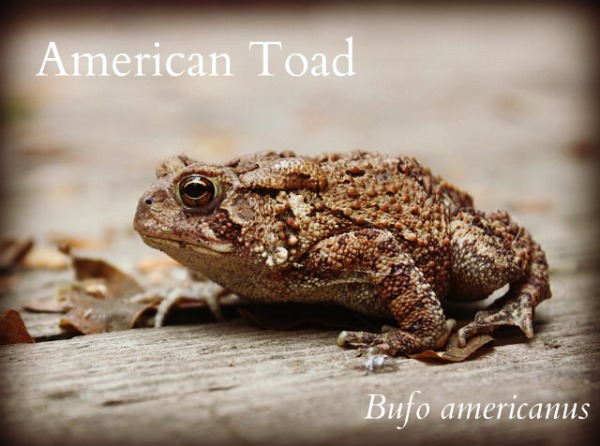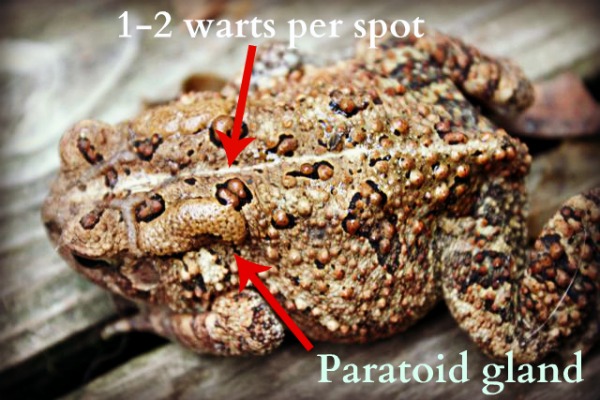One must
make a distinction
however: when dragged into prominence by half poets, the
result is not poetry,
nor till the poets among us can be
‘literalists of
the imagination’–above
insolence and triviality and can presentfor inspection, ‘imaginary gardens with real toads in them’, shall
we have
it. In the meantime, if you demand on the one hand,
the raw material of poetry in
all its rawness and
that which is on the other hand
genuine, you are interested in poetry.Marianne Moore, “Poetry”
The dogs were looking at something on the deck yesterday… sniffing (and licking, I’m guessing) and then rearing away shaking their heads and drooling like you wouldn’t believe.
That’s because toads secrete from their paratoid glands, which can be irritating to skin if picked up and I don’t doubt nasty when licked.
I know what you’re thinking.
“But Robin, both American toads and Woodhouse’s toads are common in the Mid-Atlantic region. How do you know which one this is?”
Well, I’m glad you asked.
American toads have 1-2 “rusty” warts on their dark spots, while Woodhouse’s have 3 or more. They’re warty to a fault, Woodhouse’s. Their calls are also different, but you have to hear toad calls to differentiate, I lack the poetry to describe the nuance of trills.
Woodhouse’s have paratoid glands that touch the “cranial bulge” while Americans’ are further back.
Americans are more likely to be found in the woods, and Woodhouse’s near water, but I’ve seen them both around here.
Now you can show off your mad toad ID skills on your next hike 🙂







